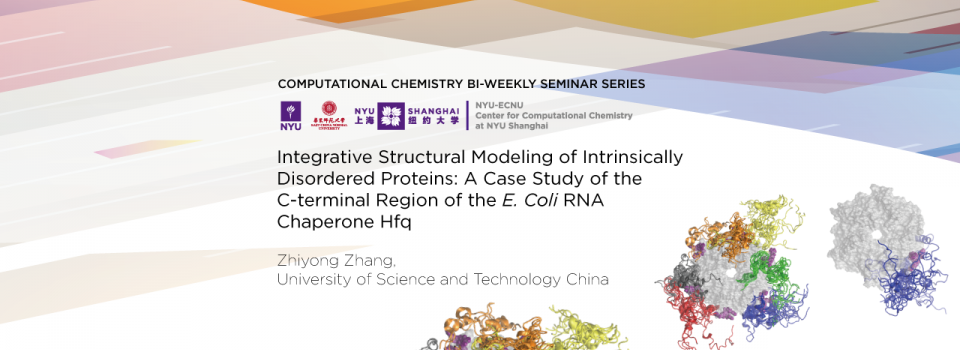
Abstract:
Intrinsically disordered proteins are extremly flexible in solution, which are closely related to their biological functions. In recent years, a notion of ‘integrative structural modeling’ has been proposed, which aims to determine the biomolecular structure and characterize its flexibility by combining complementary high and low resolution experimental data using computer simulations. Our work focus on the development and application of multi-scale modeling methods integrating experimental data to investigate conformational dynamics of large biomolecules. Here we present a case study using integrative structural modeling. In E. coli, the hexameric Hfq is an important RNA chaperone that facilitates small RNA-mediated post-transcriptional regulation. The Hfq monomer consists of an evolutionarily conserved Sm domain (residues 1-65) and a flexible C-terminal region (residues 66-102). It has been recognized that the existence of the C-terminal region is important for the function of Hfq, but its detailed structural and dynamic properties remain elusive due to its disordered nature. In this work, using integrative structural modeling, new insights into the structure and dynamics of the C-terminal region in the context of the Hfq hexamer are provided. These studies may aid in our understanding of the functional role of the C-terminal region of Hfq.
Biography:
Zhiyong Zhang, Professor in the School of Life Sciences at the University of Science and Technology of China (USTC). He received his Ph.D. degree in Biochemistry and Molecular Biology in 2003 at USTC, under the supervision of Professor Haiyan Liu and Professor Yunyu Shi. From 2003 to 2006, he was a Postdoctoral Fellow at the University of Texas Health Science Center at Houston with Professor Willy Wriggers. From 2006 to 2010, he was a Postdoctoral Fellow at the University of Utah and the Unversity of Chicago with Professor Gregory Voth. He joined USTC in 2010. His major research interests focus on the integrative structural modeling of flexible large biomolecules. He has already published 47 papers on journals including JACS, JPC Lett, JCTC, PCCP, and BJ.
Bi-Weekly Seminar Series by the NYU-ECNU Center for Computational Chemistry at NYU Shanghai


